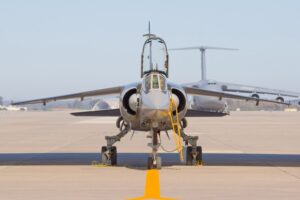ARINC 653 is a crucial standard in the realm of avionics systems, providing guidelines for developing real-time operating systems (RTOS) tailored for aerospace applications. With aviation’s stringent requirements for safety, reliability, and determinism, implementing ARINC 653 effectively is paramount. This article explores best practices for utilizing ARINC 653 to build robust and dependable real-time avionics systems. We’ll delve into partitioning strategies, certification considerations, memory management, fault tolerance, integration, and testing, offering insights to navigate the complexities of aerospace software development.
Understanding Real-Time Requirements:
In the realm of avionics systems, meeting real-time requirements is paramount for ensuring safety, reliability, and performance. Real-time systems must respond to inputs and events within specified time constraints, guaranteeing timely execution of critical tasks. In aerospace applications, such as flight control, navigation, and communication, failure to meet these stringent timing constraints can have severe consequences.
Real-time requirements are typically categorized into hard real-time and soft real-time constraints. Hard real-time systems must meet timing deadlines with absolute precision, while soft real-time systems allow for some flexibility in meeting deadlines, albeit with degraded performance beyond specified limits.
Avionics systems operate in dynamic environments where timing predictability is essential. Tasks such as sensor data processing, control algorithm execution, and communication protocols must occur within predefined time intervals to maintain aircraft stability and safety.
Meeting real-time requirements involves careful consideration of factors such as task scheduling, resource allocation, and system design. Utilizing techniques like time and space partitioning, scheduling algorithms, and priority-based execution, developers can ensure that critical tasks receive priority and are executed within their deadlines.
Furthermore, adherence to real-time requirements is not only about meeting functional specifications but also ensuring system robustness and fault tolerance. Avionics systems must handle unexpected events, errors, and faults gracefully, minimizing the risk of system failures or disruptions.

Partitioning Strategies with ARINC 653:
Partitioning is a fundamental concept in ARINC 653 that enables the isolation of software components within avionics systems.
By partitioning the system into independent and isolated modules, developers can ensure that critical tasks operate autonomously, without interference from other components.
One of the primary partitioning strategies in ARINC 653 is time and space partitioning. Time partitioning involves dividing the system’s execution time into discrete intervals, known as time frames or time slots.
Each partition is allocated a specific time frame during which it can execute its tasks without interruption from other partitions. This ensures deterministic behavior, as tasks within a partition are guaranteed to complete within their allotted time slots.
Space partitioning, on the other hand, involves allocating dedicated memory regions to each partition, preventing unauthorized access to memory outside of the partition’s boundaries.
This isolation mechanism enhances system security and reliability by preventing tasks in one partition from interfering with or corrupting data in other partitions.
In addition to time and space partitioning, ARINC 653 supports other partitioning mechanisms, such as bandwidth partitioning and schedule partitioning.
Bandwidth partitioning involves allocating fixed amounts of CPU bandwidth to each partition, ensuring fair and predictable CPU utilization among competing partitions.
Schedule partitioning allows multiple independent scheduling tables to coexist within the same system, enabling different partitions to operate according to distinct scheduling policies.
Effective partitioning strategies with ARINC 653 require careful consideration of factors such as task criticality, timing requirements, resource dependencies, and system architecture.
By appropriately partitioning the system and defining communication interfaces between partitions, developers can achieve high levels of system reliability, safety, and determinism in avionics applications.
Integration and Testing:
Integration and testing play pivotal roles in the development lifecycle of avionics systems compliant with ARINC 653 standards. As avionics software becomes increasingly complex, ensuring seamless integration of individual components and rigorous testing of the integrated system are essential to guarantee safety, reliability, and compliance with regulatory requirements.
Integration involves combining software modules, subsystems, and hardware components to create a unified avionics system.
This process encompasses various stages, including software integration, hardware integration, and system integration. Software integration focuses on combining individual software components, such as partitions or applications, into a cohesive system that meets functional requirements and interfaces seamlessly with other components.
Hardware integration involves integrating software with the underlying hardware platform, ensuring compatibility, resource allocation, and proper functioning of hardware peripherals.
System integration brings together all software and hardware components to form the complete avionics system, verifying interoperability, communication interfaces, and overall system behavior.
During integration, developers must address challenges such as software compatibility issues, interface mismatches, resource conflicts, and system-level dependencies.
Utilizing standardized interfaces, modular design principles, and simulation environments can facilitate smooth integration and early detection of integration issues.
Testing is an integral part of the integration process, encompassing various techniques and methodologies to validate system functionality, performance, and compliance with requirements.
Avionics systems must undergo rigorous testing to identify and mitigate potential defects, errors, and vulnerabilities before deployment in operational environments.
Testing activities may include unit testing, integration testing, system testing, performance testing, and acceptance testing, each targeting different aspects of system behavior and functionality.
In the context of ARINC 653-compliant avionics systems, testing efforts should focus on verifying real-time behavior, partition isolation, timing predictability, resource utilization, fault tolerance, and compliance with ARINC 653 standards.
Testing strategies may involve both simulation-based testing and hardware-in-the-loop (HIL) testing to evaluate system performance under realistic operating conditions.
Furthermore, certification authorities impose stringent testing requirements for avionics systems to ensure compliance with safety and regulatory standards.
Testing activities should be meticulously documented, traceable, and repeatable to support certification efforts and demonstrate compliance with applicable regulations.
Case Studies and Examples:
Examining real-world case studies and examples provides valuable insights into the practical application of ARINC 653 in avionics systems. These case studies illustrate how organizations have successfully implemented ARINC 653-compliant solutions to address specific challenges, improve system performance, enhance safety, and meet regulatory requirements in aerospace applications.
- Flight Management System (FMS) Implementation: A case study detailing the development and certification of a flight management system using ARINC 653 standards. This case study highlights partitioning strategies, real-time scheduling, memory management, and fault tolerance mechanisms employed to ensure reliable operation and compliance with safety-critical requirements.
- Avionics Display System: An example showcasing the utilization of ARINC 653 for partitioning a multifunction display system in commercial aircraft. The case study explores how time and space partitioning techniques were employed to isolate display applications, communication protocols, and system control functions, ensuring deterministic behavior and fault containment.
- Unmanned Aerial Vehicle (UAV) Control System: A case study demonstrating the application of ARINC 653 in the development of a real-time control system for unmanned aerial vehicles. This example illustrates how partitioning, scheduling, and resource management techniques were utilized to achieve precise control, mission autonomy, and responsiveness in UAV operations.
- Communication Management System: An example highlighting the implementation of ARINC 653 for partitioning a communication management system onboard commercial aircraft. This case study examines how partitioning strategies were employed to ensure reliable data transmission, protocol handling, and network management while maintaining isolation between critical and non-critical functions.
- In-Flight Entertainment (IFE) System: A case study showcasing the use of ARINC 653 for partitioning an in-flight entertainment system to deliver multimedia content to passengers while ensuring safety and system integrity. This example explores how partitioning, memory management, and fault isolation mechanisms were employed to prevent interference between entertainment applications and critical avionics functions.
- Automatic Dependent Surveillance-Broadcast (ADS-B) System: An example demonstrating the implementation of ARINC 653 in an ADS-B system for aircraft surveillance and tracking. This case study investigates how partitioning and scheduling techniques were utilized to meet stringent timing requirements, handle high data volumes, and ensure interoperability with existing avionics systems.
Conclusion:
In conclusion, ARINC 653 plays a pivotal role in the development of real-time avionics systems, providing a standardized framework for partitioning, scheduling, and managing critical tasks in aerospace applications. Through partitioning strategies, integration and testing practices, and real-world case studies, we’ve explored how ARINC 653 enables developers to meet stringent timing constraints, ensure system reliability, and achieve compliance with safety and regulatory standards.
By adopting best practices and lessons learned from successful implementations, organizations can leverage ARINC 653 to design and deploy avionics systems that deliver high levels of safety, performance, and efficiency. As the aerospace industry continues to evolve, ARINC 653 will remain a cornerstone of avionics development, enabling innovation, interoperability, and the advancement of aviation technology.






